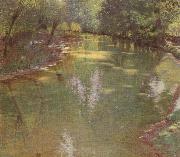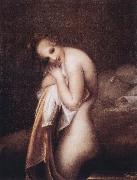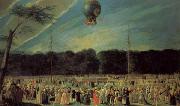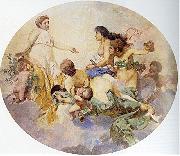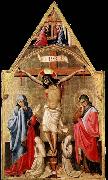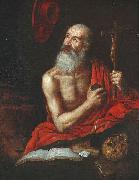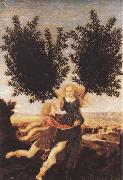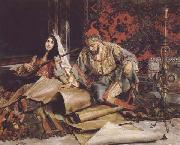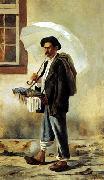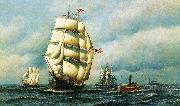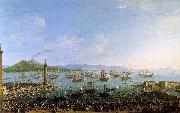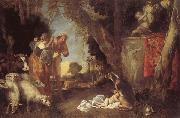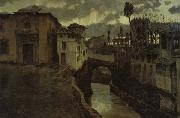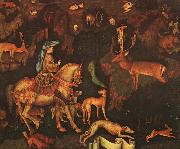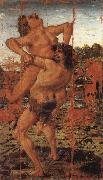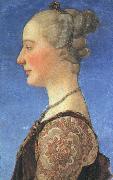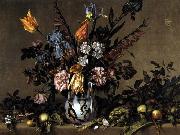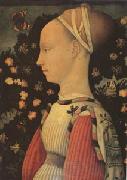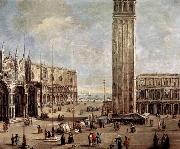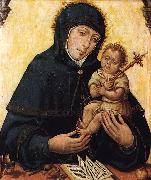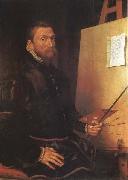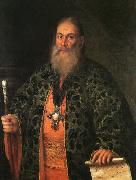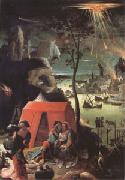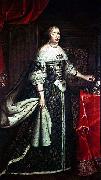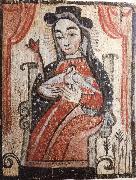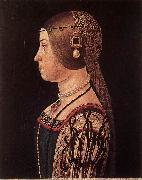|
|
|
|
|
|
|
|
|
|
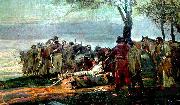 |
Antonio Alice
|
|
(23 February 1886 - 24 August 1943) was an Argentine portrait painter. He was awarded the Prix de Rome in 1904.
Alice, of Italian descent, was born in Buenos Aires, Argentina. His father, an Italian immigrant, was barely literate. His two sisters, Matilde and Santina, posed for several of his paintings.
Expelled from school and considered incorrigible for drawing in his textbooks, Alice went to work as a shoeblack. At the age of 11, while sketching Gaucho portraits between shoe shines, he was discovered by Cupertino del Campo, who went on to become the Director of the National Museum of Fine Arts of Buenos Aires. Del Campo referred Alice to the painter, Decoroso Bonifanti who gave the boy his first painting lesson in 1897.
In 1904, he was awarded the Prix de Rome (Premio Roma)and entered the Royal Academy of Painting in Turin, studying under Giacomo Grosso, Francisco Gilardi, and Andrea Tavernier. During his four years at the Academy, he was awarded three Gold Medals.
|
|
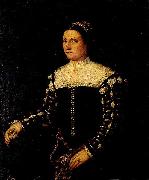 |
Antonio Badile
|
|
Antonio Badile (c. 1518 - 1560) was an Italian painter from Verona. He trained with his uncle Francesco Badile. Along with Giovanni Francesco Caroto, Antonio is known as one of the mentors of Paolo Veronese and Giovanni Battista Zelotti; as well as his father-in-law. Badile is described as continuing the "retardataire" tradition of Giovanni Francesco Caroto well past the 1540s. His masterpiece is the altarpiece for San Nazaro of a Madonna and Saints (1540); another notable work is his Resurrection of Lazarus for the chapel of Santa Croce in the church of San Bernardino. Other works are found in towns of the Veneto. |
|
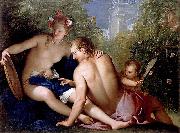 |
Antonio Bellucci
|
|
Antonio Bellucci (1654-1726) was an Italian painter of the Rococo period, who was best known for his work in England, Germany, and Austria. He was one of the many Venetian-trained artists of his time, including Ricci, Tiepolo, Amigoni, and others, who sought commissions north of Italy, providing patrons with the then-popular Italianate grand-manner frescoes for private palaces.
|
|
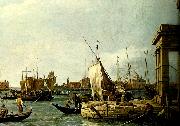 |
antonio canaletto
|
|
Giovanni Antonio Canal (28 October 1697 - 19 April 1768) better known as Canaletto, was a Venetian painter famous for his landscapes, or vedute, of Venice. He was also an important printmaker in etching. |
|
|
|
|
|
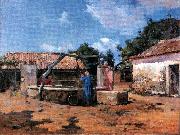 |
Antonio Carvalho de Silva Porto
|
|
(Porto, 11 November 1850 - Porto, 11 June 1893) was a Portuguese naturalist painter.
Born in Porto, he studied there under João Antenio Correia and T. Furtado, then continued his studies in Paris and Rome.
While in Paris he exhibited his work in the Salon and in the World´s Fair of 1878. In Paris, he studied with his friend João Marques de Oliveira, where they were pupils of Adolphe Yvon and Alexandre Cabanel. They became followers of the naturalist Barbizon School, and brought the new school of painting to Portugal, when they returned in 1879.
Silva Porto become one of the most acclaimed naturalist painters of his generation, showing the heritage of Jean-Baptiste Camille Corot and Charles-François Daubigny. Secondary effects from impressionism can sometimes be found in his paintings.
|
|
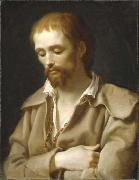 |
Antonio Cavallucci
|
|
(21 August 1752 - 18 November 1795) was an Italian painter of the late Baroque.
Cavallucci was born in Sermoneta in the Lazio. His artistic talents were recognized in an early stage by Francesco Caetani, Duke of Sermoneta in 1738-1810. In 1765, he brought the 13 year old Cavallucci to Rome, where he became a pupil of Stefano Pozzi and three years later of Gaetano Lapis. He also studied drawing at the Accademia di San Luca (c. 1769-1771).
His earliest work dates from the mid-1760s. It is a tempera frieze in the Casa Cavallucci in Sermoneta. His first portrait was of his benefactor Duke Francesco Caetani. This portrait is only preserved as an engraving in 1772 by Pietro Leone Bombelli (1737-1809).
His first major commission was the decoration of five audience chambers in the Caetani Palace in Rome in 1776. He painted mythological scenes and allegories appropriate for each room.
In the early 1780s he painted mostly portraits, such as those of Francesco Caetani and Teresa Corsini, Duchess of Sermoneta.
The Origin of Music (1786) is probably the most important painting of his mid-career. It was based on the illustrations in the book Iconologia (1593) from Cesare Ripa.
The commissions kept coming under his new patron, Cardinal Romualdo Braschi-Onesti (1753-1817), nephew of the pope Pius VI. He has painted the portraits of his new benefactor and of the pope in 1788.
He was inducted into the Accademia di San Luca in 1786, Academy of Arcadia in 1788, and the Congregazione dei Virtuosi al Pantheon in 1788.
He is said to have painted St Benedict Joseph Labre while the saint was in ecstasy, or (as is perhaps more plausible), having seen the saint in ecstasy, to have brought him to his studio and painted his portrait there. In later years he worked for Cardinal Francesco Saverio Zelada, decorating his titular church San Martino ai Monti in Rome. Cavallucci died in Rome in 1795.
He was influenced by Pompeo Batoni and Anton Raphael Mengs. There is in his art some of the northern European feeling that had made its way into Rome at the end of the eighteenth century. The Portuguese painter Domingos Sequeira was one of his pupils.
|
|
|
|
 |
Antonio Ciseri
|
|
(October 25, 1821 - March 8, 1891) was a Swiss painter of religious subjects.
Ciseri was born in Ronco sopra Ascona in the canton of Ticino in Switzerland. In 1833 he moved with his father to Florence. He was admitted in 1834 to the Accademia di Belle Arti, where he trained under Niccola Benvenuti. In 1849, he began offering instruction to young painters, and eventually ran a private art school. Among his earliest students was Silvestro Lega.
Ciseri's religious paintings are Raphaelesque in their compositional outlines and their polished surfaces, but are nearly photographic in effect. He fulfilled many important commissions from churches in Italy and Switzerland. Ciseri also painted a significant number of portraits. He died in Florence on March 8, 1891.
|
|
|
|
|
|
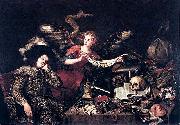 |
Antonio de Pereda
|
|
(ca. 1611-1678) was a Spanish Baroque-era painter , best known for his still lifes. Pereda was born in Valladolid. He was the eldest of three brothers from an artistic family. His father, mother and two brothers were all painters. He was educated in Madrid by Pedro de las Cuevas and was taken under the protective wing of the influential Giovanni Battista Crescenzi.After Crescenzi's death in 1635, Pereda was expelled from the court and began to take commissions from religious institutions. As well as still lifes and religious paintings, Pereda was known for his historical paintings such as the Relief of Genoa (1635) which was painted for the Buen Retiro Palace in Madrid as part of the same series as Velezquez's Surrender of Breda.
|
|
|
|
|
|
|
|
|
|
|
|
 |
Antonio Fontanesi
|
|
23 February 1818 - 17 April 1882) was an Italian painter who lived in Meiji period Japan between 1876 and 1878. He introduced European oil painting techniques to Japan, and exerted a significant role in the development of modern Japanese yega (Western style) painting. He is known for his works in the romantic style of the French Barbizon school.
Fontanesi was born in Reggio Emilia, Emilia-Romagna, and trained with the landscape painters Prospero Minghetti and Vincenzo Carnevali. From 1841 to 1846 he made theatre sets and began painting landscapes. In 1850, he moved to Geneva, where he stayed until 1865. His main area of interest was landscape painting, which he expanded on after visiting the 1855 Exposition Universelle in Paris. He participated in important artistic exhibitions, displaying his works in Lyon, Turin, Milan, Florence, Genoa and the Triennial Exhibition of Fine Art in Bologna. He was nominated professor at the Academy of Lucca, but moved to Turin when a chair as a landscape professor was created specially for him at the Accademia Albertina in Turin from 1869 to 1876.
|
|
|
|
|
|
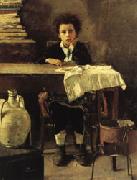 |
Antonio Mancini
|
|
(14 November 1852 - 28 December 1930) was an Italian painter.
Mancini was born in Rome and showed precocious ability as an artist. At the age of twelve, he was admitted to the Institute of Fine Arts in Naples, where he studied under Domenico Morelli (1823-1901), a painter of historical scenes who favored dramatic chiaroscuro and vigorous brushwork, and Filippo Palizzi (1818-1899), a landscape painter. Mancini developed quickly under their guidance, and in 1872, he exhibited two paintings at the Paris Salon.
Mancini worked at the forefront of Verismo movement, an indigenous Italian response to 19th-century Realist aesthetics. His usual subjects included children of the poor, juvenile circus performers, and musicians he observed in the streets of Naples. His portrait of a young acrobat in "Saltimbanco" (1877-78) exquisitely captures the fragility of the boy whose impoverished childhood is spent entertaining pedestrian crowds.
While in Paris in the 1870s, Mancini met Impressionists Edgar Degas and Édouard Manet. He became friends with John Singer Sargent, who famously pronounced him to be the greatest living painter. His mature works show a brightened palette with a striking impasto technique on canvas and a bold command of pastels on paper.
In 1881, Mancini suffered a disabling mental illness. He settled in Rome in 1883 for twenty years, then moved to Frascati where he lived until 1918. During this period of Mancini's life, he was often destitute and relied on the help of friends and art buyers to survive. After the First World War, his living situation stabilized and he achieved a new level of serenity in his work. Mancini died in Rome in 1930 and buried in the Basilica Santi Bonifacio e Alessio on the Aventine Hill.
His painting,The Poor Schoolboy, exhibited in the Salon of 1876, is in the Musee d'Orsay in Paris. Its realist subject matter and dark palette are typical of his early work. Paintings by Mancini also may be seen in major Italian museum collections, including Galleria Nazionale d'Arte Moderna e Contemporanea in Rome, and Museo Civico-Galleria d'Arte Moderna in Turin. The Philadelphia Art Museum holds fifteen oil paintings and three pastels by Mancini that were a gift of New York art dealer Vance N. Jordan. |
|
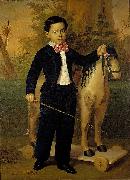 |
Antonio Maria Esquivel
|
|
Nacio en Sevilla en 1806. Comenzo los estudios de pintura en la Academia de Bellas Artes de Sevilla. Alli se familiarizo con la tecnica pictorica y el detallismo al estilo de Murillo.
En 1831, se traslado a Madrid, donde concurso en la Academia de San Fernando, siendo nombrado academico de merito. En contacto con el ambiente intectual madrileno de esos anos, participo activamente en la fundacion del Liceo Artistico y Literario en 1837, donde daria clases de Anatomia, asignatura que impartiria tambien mas tarde en la Academia de San Fernando.
En 1839, otra vez en Sevilla, sufrio una enfermedad que le dejo practicamente ciego; el artista, sumido en una profunda depresion, se intento suicidar arrojandose al rio Guadalquivir. Enterados sus companeros y amigos poetas y artistas y movilizados por el Liceo para ayudarle, sufragaron entre todos un caro tratamiento realizado por un prestigioso oftalmologo frances. Gracias a esto, en 1840 sano y recupero la vision. El artista, agradecido, pinto a sus amigos, poetas y pintores del Romanticismo, en un cuadro que se ha hecho justamente celebre. Como reconocimientos oficiales, recibo la placa del Sitio de Cadiz y la Cruz de Comendador de la Orden de Isabel la Catolica. En 1843 es nombrado Pintor de Camara y en 1847 academico de San Fernando, siendo ademas miembro fundador de la Sociedad Protectora de Bellas Artes. Como teorico de la pintura, redacto un Tratado de Anatomia Pictorica, cuyo original se guarda en el Museo del Prado. Fallecio en Madrid en 1857.
Sus hijos Carlos Maria (1830-1867) y Vicente tambien fueron pintores. |
|
|
|
|
|
|
|
 |
Antonio Parreiras
|
|
(1860 - 1937) was a Brazilian painter. Although much of his work was made up of historical and nude paintings, he expressed himself best in his landscapes, which combined European influences with those of his native Brazil.
In 1883, Parreiras met German painter George Grimm, who taught landscape, flora and wildlife painting, while studying at Brazil's Fine Arts Imperial Academy. Grimm influenced Parreiras to move away from academic traditions of painting in favor of the direct observation of nature, free brushstrokes and luminosity.
Parreiras traveled throughout Europe for a number of years, visiting many countries including Germany, Italy, and France, exhibiting his first female nude at the Salon in Paris in 1907. He continued to visit Europe after permanently returning to Brazil in 1914, and in 1929 received a gold medal in the Exposition International in Seville.
Parreiras also founded the Plein Air School in Niterei, Brazil, and a museum holding many of his works, the Museum Antônio Parreiras, is also in Niterei.
|
|
|
|
|
|
|
|
|
|
|
|
|
|
|
|
|
|
|
|
|
|
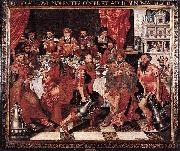 |
Antoon Claeissens
|
|
(his name is given in many varieties, with his first name rendered as Anton, Anthonie, Anthony, Anthuenis, and his surname as Claes, Claesz, Claeis, Claeiss, Claessens and Claeissins), the son of Pieter Claes the elder, painted historical and allegorical subjects, and portraits. He was a native of Bruges, and there entered the Guild of St. Luke in 1575, and became its dean in 1586, 1590, and 1601. He died in 1613. His works, several of which are in the Hôtel-de-Ville and churches of Bruges, are distinguished by their fine colouring and finish. In the H6tel-de-Ville is a 'Grand Banquet' with many portraits of magistrates of the time, dated 1574.
His son, Pieter Anthonie, was dean of the Guild of St. Luke at Bruges in 1607, and died in 1608.
|
|
|
|
|
|
|
|
|
|
Apollonio di Giovanni
|
|
ca.1415-1465
Italian painter and illuminator. He was trained by illuminators in the circle of Bartolomeo di Fruosino and Battista di Biagio Sanguini (1393?C1451) and became a member of the Arte dei Medici e degli Speziali in 1442 and of the Compania di S Luca in 1443. Apollonio was influenced by Filippo Lippi, Lorenzo Ghiberti and Paolo Uccello. |
|
|
|
|
|
|
|
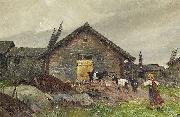 |
Arborelius
|
|
Olof Arborelius
Olof Arborelius 1842-1915
|
|
|







